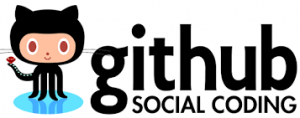There are several stages every web developer has to go through. For a long time one is just using other developers’ tools. You have no idea how many people are out in the wild, calling themselves web developers, and all they can do is install WordPress and customizing a theme. I guess we have all been there, but I think it’s a little pretentious to call oneself web-developer at that stage. But maybe one does not know any better? I remember that I didn’t understand the difference between a web designer and a web developer when I first experimented with WordPress. For your edification, a web designer creates the visual/graphical experience of a website, whereas the developer makes the website and its features work by writing code. More often than not, designers don’t know how to code, and developers don’t know how to design. I happen to belong to the latter category.
The second stage may be when a web creator realizes that using WordPress and themes can only take you so far. How can you add a link to your business website to the footer of that theme you bought? That’s one of the first times you have to actually open a file that contains real code. PHP and HTML in the case of WordPress. Using the find feature of a code editor one tries to find that section of the footer in order to enter the URL where one thinks it belongs. Then one saves the file and hopes that this brave action won’t break the whole site. Hopefully by now one has realized that it’s still a long way until one can hope to be referred to as a true web developer.
It was such a humbling experience that got me started on the long and painful journey to becoming a web developer, and beyond that, a software engineer (still in progress). The rather funny website Dungeons and Developers may give you an idea of how many skills one needs to acquire in order to be a web developer. It all starts with CSS and HTML. Then come JavaScript and jQuery. As soon as one gets interested in the server-side and in true web applications (e.g. Ruby on Rails), it’s time to learn a programming language. Thereafter comes a time where I needed to get familiar with common application infrastructure patterns and the basics of provisioning servers.
On that long journey I used plenty of open-source code to finish my projects. Open-source means for free. WordPress is open-source, Ruby on Rails is open-source, Apache servers, Linux systems, and much more….The truth is that our world wouldn’t be where it is today without open-source. I always wanted to make my humble and small contribution, and release an open-source project on my own. Today I realized that goal by releasing v1.0.0-alpha of a plugin for CraftCMS. Constant-Contact-Subscribe for CraftCMS is a very simple plugin for subscribing to a Constant Contact newsletter list. So far it only supports submitting a new email address via AJAX to one specific list that you define in the plugin settings. You can see the source code in my GitHub repository.
I have to say that it is a fantastic feeling. I can only imagine how cool it will feel when other developers start using it, and contributing to it! I was able to build that plugin because I invested in a very good online course called Craft Plugin Development by Ben Croker. It’s certainly not a course for beginners, but for someone who understands PHP, Object Oriented Design and CraftCMS, the course is really well done.
Many of you know that I am a constant learner. You should be prepared for many more open-source code – maybe when I write a custom plugin for your next project?



